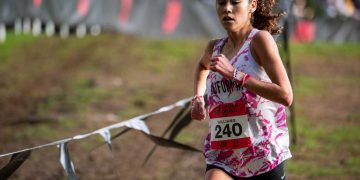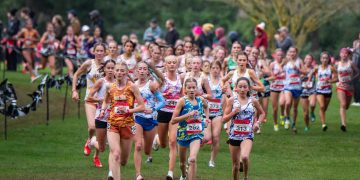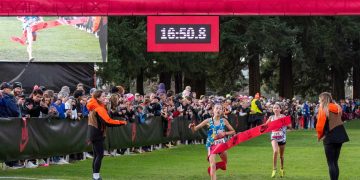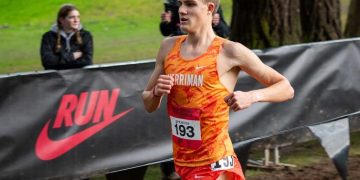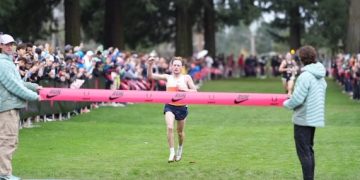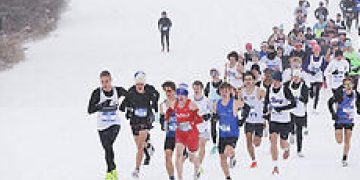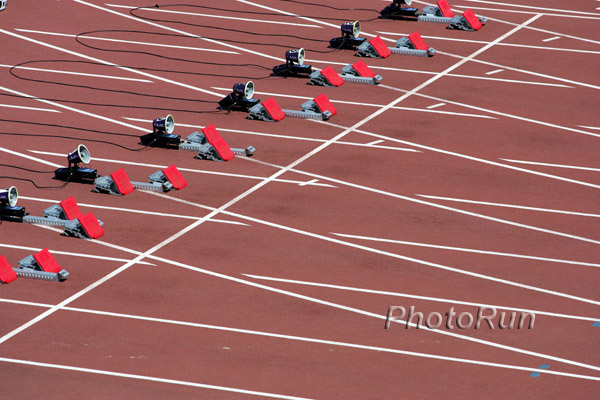
RelatedPosts
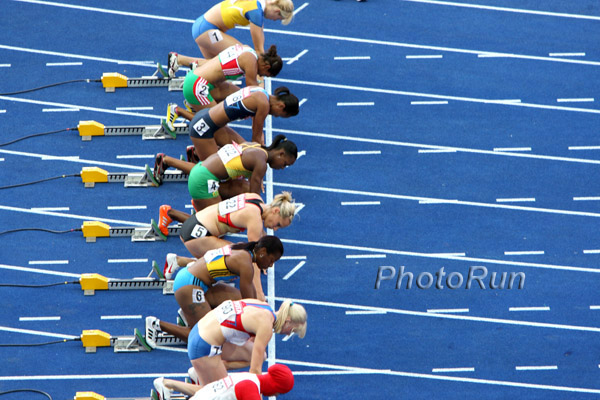 Set! WC 2009, photo by PhotoRun.net
Set! WC 2009, photo by PhotoRun.net
Warming up and Cooling Down for the Sprints
By Roy Stevenson
Warming up prepares the sprinter’s muscles by increasing the force of their muscle contractions and speeding up muscle contraction rate, giving the sprinter more power and speed. Warming up also helps nervous young athletes stabilize their adrenalin rush before competition, helping them better control their pre-event nervousness. Here’s how sprinters should go about warming up for races and training sessions.
Phase One: Start your sprinter’s warm up with 10-15 minutes jogging to increase body temperature–slow and easy.
Phase Two: This should follow on immediately after phase two and consists of 10-15 minutes of dynamic stretching exercises to reduce muscle stiffness. Dynamic (ballistic) stretches through a wide range of motion work best because they are closer to the athlete’s actual movements in competition; and research shows that static stretching exercises do not simulate rapid running movement and may actually cause a reduction in leg power.
Phase Three: The sprinter progresses to 10-15 minutes of general and event-specific drills. These specific drills put the finishing touches on the warm up and prepare the athlete for sprint training. The drills usually include leg speed exercises, and it is here that pre-race and pre-training warm ups diverge.
The pre-race warm up needs a few (3-6) easy acceleration “stride throughs” over 50 meters (but no longer than this). Follow these accelerations with a few practice starts. This phase should finish 5 minutes before the race start, and all the runner needs to do until then is walk/jog to keep warm. The pre-competition warm-up needs to be controlled so that it does not deplete the sprinter’s high-energy phosphates ATP and PC.
When warming up for a workout, the runner can do a more rigorous preparation. Typical sprint warm up drills include series of 5-10 x 50 meter or 5-10 x 100 meter “acceleration stride throughs” where the sprinter focuses on correct running technique and staying relaxed while maintaining a fast leg turnover. These should be done with rolling starts, where the sprinter gradually picks up his pace after slow jogging for the first 10 meters. Each stride through should be a little faster than the previous one, with the final one being at about 95% of top speed. If your sprinters complain that these accelerations are fatiguing them for the main work out, adjust the number of reps downward.
After these fast stride-throughs, many coaches have their runners do a series of general practice drills. With these drills, the coach is limited only by his imagination and the many volumes of books on this subject. Here are a few examples: sideways walking or running (aka carioca), backwards running, quick foot turnover in ladders and other ladder drills, cone running for agility, short high knee lift drills (walking or running), heel kick drills, forward lunge walking, side lunges, calf walking, skipping, practice starts out to 20 meters, hopping, bounding, plyometrics, calisthenics like squat thrusts, short uphill sprints, downhill sprints, etc–you get the idea!
There are whole books dedicated to these drills. It is not necessary to do all of these drills in every warm up–in fact it would be impossible! So just select a few different drills for each warm up to keep it varied, interesting, and fun. The number of repetitions of each of these drills will vary according to how long each drill takes and its complexity. Generally you would expect your sprinters to do 5-10 repetitions of each drill before moving on to the next one. The drill phase of the sprinter’s warm up should take 10-15 minutes, and longer at the beginning of the season.
Use one of your more skilled sprinters to demonstrate each drill to the rest of the sprinters before they try them. After the drills, the sprinter can then progress to practice starts, with a long recovery between each, and the main workout.
Final notes on the warm up.
If the temperature is very cold, a passive warm up, where external heating agents like hot tubs, hot water bottles, and hot showers are applied, can be highly effective, prior to going outside into an active warm up.
The cool down
The cool down is an often-neglected part of the workout and every bit as important as the warm up. It consists of an abbreviated warm up. i.e. An easy 5-10 minute jog followed by static stretching.
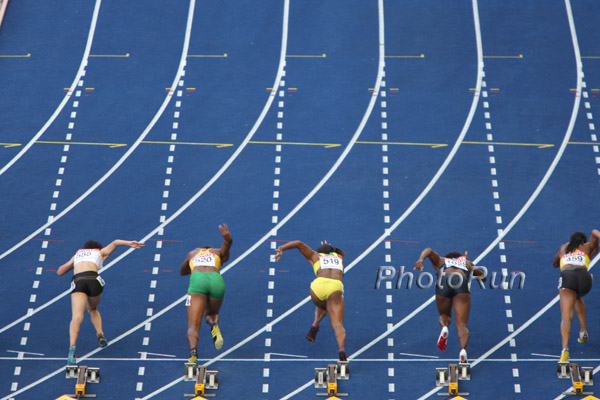 Go! WC 2009, photo by PhotoRun.net
Go! WC 2009, photo by PhotoRun.net
For a free sub to American Track & Field, please click on www.american-trackandfield.com
Author
-

Larry Eder has had a 52-year involvement in the sport of athletics. Larry has experienced the sport as an athlete, coach, magazine publisher, and now, journalist and blogger. His first article, on Don Bowden, America's first sub-4 minute miler, was published in RW in 1983. Larry has published several magazines on athletics, from American Athletics to the U.S. version of Spikes magazine. He currently manages the content and marketing development of the RunningNetwork, The Shoe Addicts, and RunBlogRun. Of RunBlogRun, his daily pilgrimage with the sport, Larry says: "I have to admit, I love traveling to far away meets, writing about the sport I love, and the athletes I respect, for my readers at runblogrun.com, the most of anything I have ever done, except, maybe running itself." Also does some updates for BBC Sports at key events, which he truly enjoys.
Theme song: Greg Allman, " I'm no Angel."
View all posts


